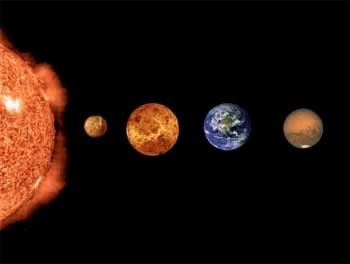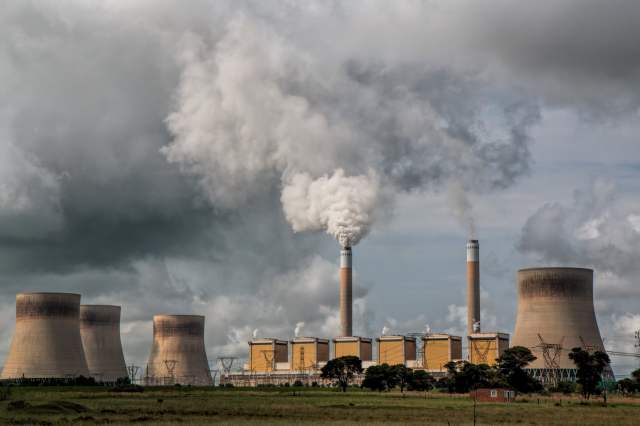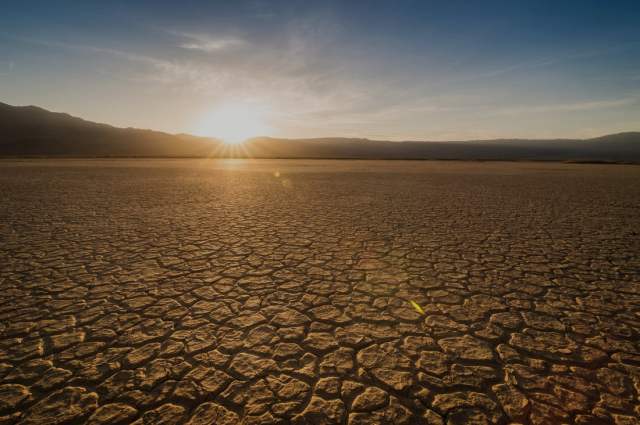If the Earth had no atmosphere, the planet's average temperature would be 58F (32C) cooler. Adding back just the oxygen and nitrogen would have almost NO effect on the temperature. That 58F of warming is due almost ENTIRELY to the greenhouse effect acting on two components of our atmosphere. About two-thirds is due to water vapor and one-third to carbon dioxide (CO2). The other components having greenhouse effects are methane, nitrous oxide, chloro- and hydrofluorocarbons.
The Earth began warming with the advent of the Industrial Revolution when the use of steam engines and then internal combustion engines grew rapidly, all fueled with hydrocarbon fossil fuels. The Earth is now warming at a historically extreme rate; twenty five times as rapidly as the Earth moved from glacial to interglacial states over the last 3 million years. That warming has been studied extensively for decades by scientists all over the planet. Their near-universal conclusion is that the primary cause of that warming is the greenhouse effect acting on CO2 emitted by humans burning fossil fuels (coal, petroleum, natural gas) for energy and transportation.
Up until the invention of the steam engine, CO2 in our atmosphere stayed in the range of 280 - 300 ppm for almost 3 million years. It is now just breaching 420 ppm, a 50% increase in the gas responsible for one-third of all greenhouse warming. That warming is reinforced by positive feedback from increased humidity in the Earth's atmosphere; water vapor is the most effective greenhouse gas but as a precipitable component of the atmosphere, changes only in response to temperature changes brought about by other agents. Atmospheric CO2 levels are also increased by deforestation and the thawing of frozen tundra.
The warming has numerous effects, many of which are harmful. Aside from its impact on all life forms via more frequent and more intense heat waves, we are experiencing sea level rise and increased ice melt. The energy that drives weather comes from the sun via the atmosphere and the hydrosphere. As global warming increases the energy available for weather, the average intensity of weather will increase. Increased temperatures are causing glaciers and snowpack to disappear. That decreases the Earth's albedo, decreasing the amount of solar radiation reflected back to space and providing more positive feedback. Increased meltwater from the poles is reducing the density of water there and thus the drive for the overturning currents responsible for the basis of almost the entire marine food chain as well as the temperate climate of Europe
Currently, thirty percent of human CO2 emissions are absorbed by the world's oceans. CO2 in aqueous solution produces carbonic acid which reduces the oceans pH (makes it more acidic). That change affects numerous biochemical reactions utilized by marine life, in particular the ability to fix carbonates into shells, exoskeletons and corals. The loss of corals will expose thousands of miles of coastlines to higher wave energies causing increased erosion and coastal flooding.
So, while some argue that added CO2 will increase agricultural production in some locales and that warming will be welcome by some residents in high latitude settings, the balance of warming effects are and will continue to be overwhelmingly negative.
TOPICS TO EXPLORE
How Do We Know that Humans Are the Source of the Increased CO2?
How Do We Know that CO2 is the Cause of the Warming?
How Do We Know that Warming Will be Harmful?
What Are Tipping Points and Have We Crossed Any?
References

 science.nasa.gov
science.nasa.gov

 science.nasa.gov
science.nasa.gov

 science.nasa.gov
science.nasa.gov

 oceanservice.noaa.gov
oceanservice.noaa.gov
The Earth began warming with the advent of the Industrial Revolution when the use of steam engines and then internal combustion engines grew rapidly, all fueled with hydrocarbon fossil fuels. The Earth is now warming at a historically extreme rate; twenty five times as rapidly as the Earth moved from glacial to interglacial states over the last 3 million years. That warming has been studied extensively for decades by scientists all over the planet. Their near-universal conclusion is that the primary cause of that warming is the greenhouse effect acting on CO2 emitted by humans burning fossil fuels (coal, petroleum, natural gas) for energy and transportation.
Up until the invention of the steam engine, CO2 in our atmosphere stayed in the range of 280 - 300 ppm for almost 3 million years. It is now just breaching 420 ppm, a 50% increase in the gas responsible for one-third of all greenhouse warming. That warming is reinforced by positive feedback from increased humidity in the Earth's atmosphere; water vapor is the most effective greenhouse gas but as a precipitable component of the atmosphere, changes only in response to temperature changes brought about by other agents. Atmospheric CO2 levels are also increased by deforestation and the thawing of frozen tundra.
The warming has numerous effects, many of which are harmful. Aside from its impact on all life forms via more frequent and more intense heat waves, we are experiencing sea level rise and increased ice melt. The energy that drives weather comes from the sun via the atmosphere and the hydrosphere. As global warming increases the energy available for weather, the average intensity of weather will increase. Increased temperatures are causing glaciers and snowpack to disappear. That decreases the Earth's albedo, decreasing the amount of solar radiation reflected back to space and providing more positive feedback. Increased meltwater from the poles is reducing the density of water there and thus the drive for the overturning currents responsible for the basis of almost the entire marine food chain as well as the temperate climate of Europe
Currently, thirty percent of human CO2 emissions are absorbed by the world's oceans. CO2 in aqueous solution produces carbonic acid which reduces the oceans pH (makes it more acidic). That change affects numerous biochemical reactions utilized by marine life, in particular the ability to fix carbonates into shells, exoskeletons and corals. The loss of corals will expose thousands of miles of coastlines to higher wave energies causing increased erosion and coastal flooding.
So, while some argue that added CO2 will increase agricultural production in some locales and that warming will be welcome by some residents in high latitude settings, the balance of warming effects are and will continue to be overwhelmingly negative.
TOPICS TO EXPLORE
How Do We Know that Humans Are the Source of the Increased CO2?
How Do We Know that CO2 is the Cause of the Warming?
How Do We Know that Warming Will be Harmful?
What Are Tipping Points and Have We Crossed Any?
References

What is the greenhouse effect? - NASA Science
The greenhouse effect is the process through which heat is trapped near Earth’s surface by substances known as ‘greenhouse gases.’ Imagine these gases as a cozy blanket enveloping our planet, helping to maintain a warmer temperature than it would have otherwise. Greenhouse gases consist of...

Causes - NASA Science
Takeaways Increasing Greenhouses Gases Are Warming the Planet Scientists attribute the global warming trend observed since the mid-20th century to the human expansion of the “greenhouse effect”1 — warming that results when the atmosphere traps heat radiating from Earth toward space. Life on...

Effects - NASA Science
Takeaways Earth Will Continue to Warm and the Effects Will Be Profound Global climate change is not a future problem. Changes to Earth’s climate driven by increased human emissions of heat-trapping greenhouse gases are already having widespread effects on the environment: glaciers and ice sheets...
What is Ocean Acidification?
Ocean acidification refers to a reduction in the pH of the ocean over an extended period time, caused primarily by uptake of carbon dioxide (CO2) from the atmosphere.
Last edited:

